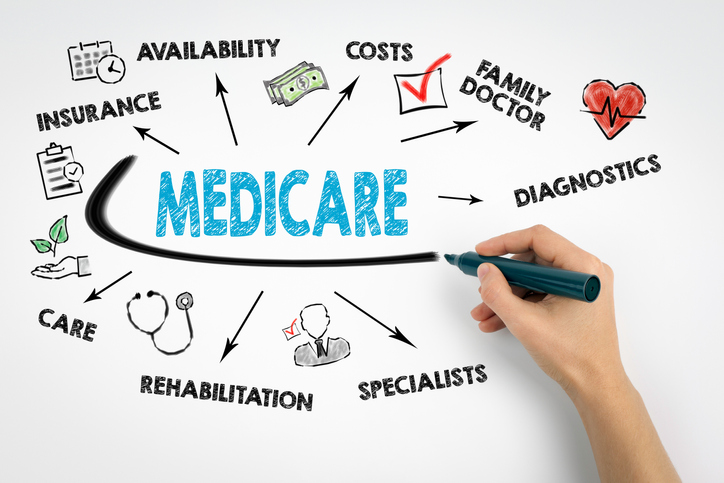Medicare was established in 1965, at a time when it was almost impossible for people over 65 to get private medical insurance. When president Lyndon Johnson signed the federal program into law, it made access to medical attention a universal right for Americans 65 and older.
The program has contributed to improving the health and longevity of US citizens.
Although the majority of Medicare beneficiaries are 65 and older, other people are also eligible, including:
- Youth or young adults under 65 with a disability.
- People with permanent kidney damage (end-stage kidney disease) who need dialysis or a kidney transplant.
To be eligible for Medicare you must be a citizen, or legal permanent resident of the United States who has lived in the country for at least 5 years.
The Structure of Medicare
Medicare is divided into four parts. Parts A and B are generally known as original or traditional Medicare.
Part A. Covers hospital attention.
Part B. Covers outpatient care.
Part C. Medicare Advantage offers additional coverage, such as vision and hearing care, dentistry, and wellness services. Many people who have parts A or B pay a monthly fee for this supplemental plan.
Part D. Medicare’s prescription medication plan.
You can also purchase a policy known as Medigap, which is another supplemental insurance plan offered by Medicare that helps to pay for deductibles and copays. In order to be eligible for Medigap, you must be a beneficiary of traditional Medicare part A or B, and it implies an additional monthly fee.
When Should I Enroll?
You have a window of seven months to enroll in Medicare part A which begins three months prior to your 65th birthday and ends three months after it.
If you don’t enroll in part A during this period, you will have to pay a penalty for enrolling, and may have to pay higher monthly premiums.
You can enroll in part B once you have enrolled in part A, or you can wait until you need this type of coverage.
The same applies to Medicare Advantage and Medigap.
The Future of Medicare
The number of people eligible for Medicare began to increase rapidly in 2011 when the first generation of baby boomers (people born after World War II, from 1946 to 1965) reached the age of 65 and became eligible for the federal program. By 2030, when the youngest boomers turn 65, enrollment in Medicare is expected to double to an estimated number of 80 million people.
The cost of Medicare equaled approximately 3.6% of the Gross Domestic Product (GDP) in 2010. This number is expected to increase to 5.1% by 2030.
Source: ADAM, Medicare and Medicaid Services Centers, Medicare.gov, National Academy of Social Insurance.
